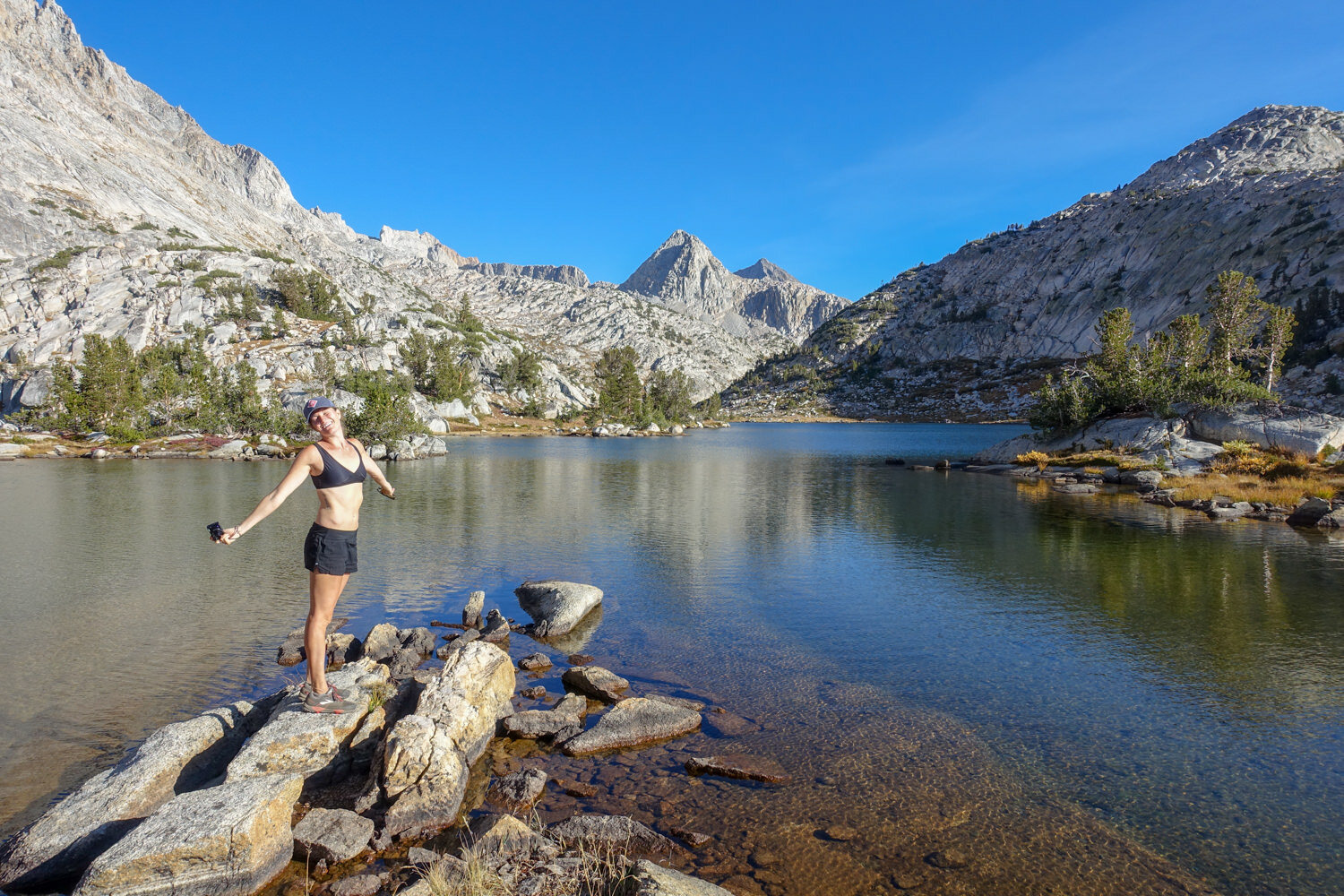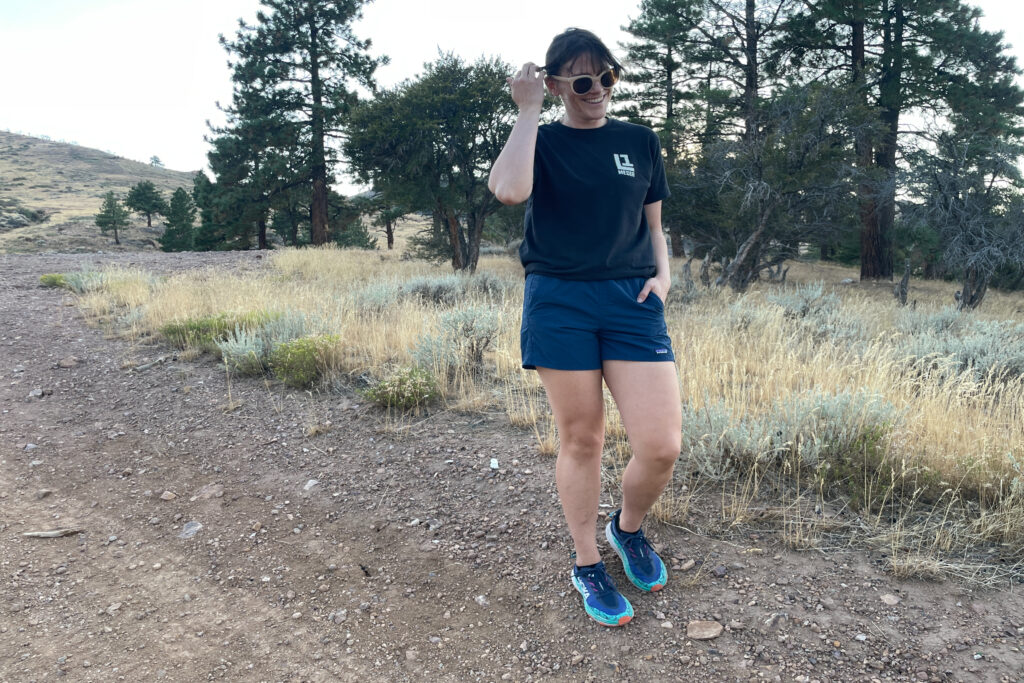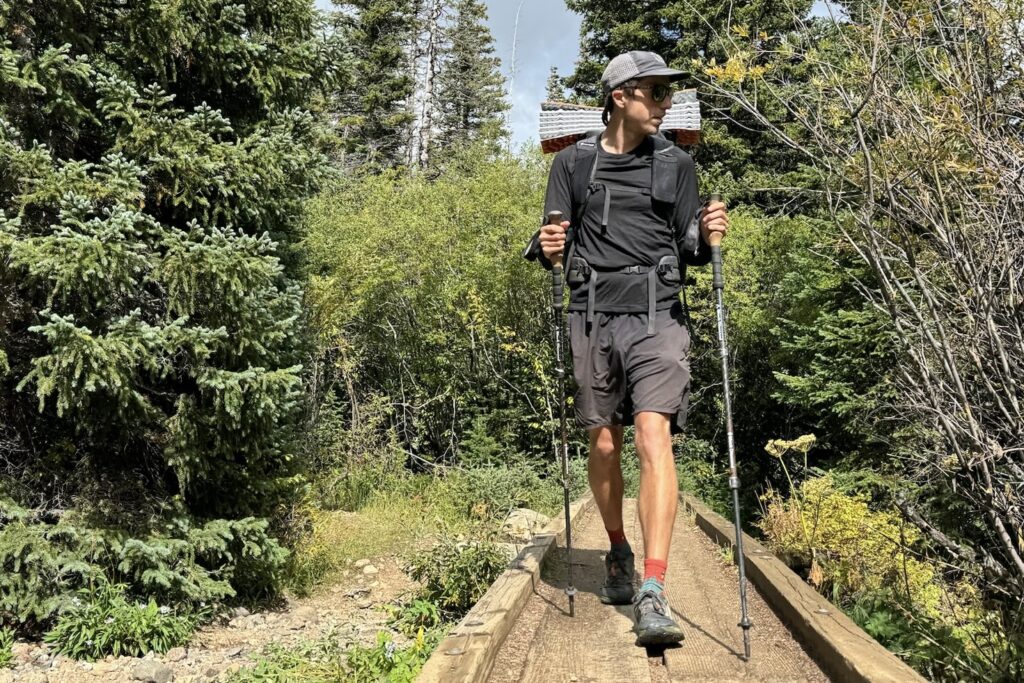
In the wild, stink gets some slack. And while you may lean in to embrace it, a hygiene routine can go a long way toward helping you feel fresh and stay healthy in the backcountry.
In this post, we outline the most effective hygiene essentials, as well as which ones you can leave at home, how to keep as clean as you can in the wild, and how to deal with certain health hazards resulting from letting things slide. Most importantly, we’ll give you the goods you need to stay clean while still being mindful of the environment.

Backpacking Hygiene Essentials
When you’re trying to shave ounces off your pack weight it can be hard to decide what gear makes the cut in terms of personal hygiene. Below we outline what we bring along on every backcountry trip and what we leave behind.
What To Pack

HAND SANITIZER
Keeping your hands clean is imperative to your health in the backcountry. We’ll just say it – it limits the spread of fecal matter from your hand to your mouth and reduces the chance of contracting giardia – a truly unfortunate parasitic infection contracted from ingesting solid waste (or water containing infected solid waste). We always keep a small one ounce container of unscented, alcohol-based gel hand sanitizer in our hipbelt pocket for easy access. Since they kill germs on the surface of the skin, the CDC warns that hand sanitizers are not as effective when hands are visibly dirty or greasy, so give them a quick water bottle rinse first if they’re extra grimy. Also, remember your fingernails, where bacteria can hide.

BIODEGRADABLE SOAP
We usually just clean ourselves with water in the backcountry and that works great. But some hikers like to use soap to clean up after a long day of hiking. If that’s you, we recommend biodegradable soap such as Dr. Bronner’s Organic Pure Castile Liquid Soap (Unscented). However, biodegradability doesn’t mean these products can be used indiscriminately. Never suds up or rinse yourself directly in a water source, even with biodegradable soap. Instead, fill a water bottle or two and walk at least 200 feet away from any water sources to clean up. This makes a huge difference for wildlife, large and small, as well as fellow hikers, who may not be enthused about cooking a meal in a pot of your bath water.

TRAVEL TOOTHBRUSH & TOOTHPASTE
We always bring a folding (or sawed-off) toothbrush and travel-sized toothpaste to minimize weight and bulk. Carrying along a small amount of floss is also a good idea (backpacking food often sticks to the teeth). The best way to Leave No Trace when brushing your teeth in the backcountry is to use the Eco Spray – the dispersal of toothpaste using a little bit of water, high pressure, and full commitment (demoed below).
WASH CLOTH OR BANDANA
A cotton bandana can double as a washcloth for cleaning and it also dries quickly. You can also pick up expandable and reusable washcloths such as Pack-n-Wipes, which are super compact, lightweight, and also dry quickly.
PACK TOWEL
In addition to a bandana or washcloth, we often have a quick-dry microfiber pack towel to dry ourselves. They’re lightweight and super absorbent. You don’t need a full-body towel – a size equivalent to a bandana should do the trick.

UNSCENTED MOIST TOWELETTES/WET WIPES
When backpacking in areas such as the desert or canyon country where you’ll have very little access to reliable water sources, carrying body wipes can make all the difference. Remember never to bury wet wipes; always pack them out. Even products that are labeled as biodegradable take a long time to decompose – especially in arid environments. We recommend Sea to Summit Wilderness Wipes.

TOILET PAPER AND ZIPLOC BAGS
Save a partial roll of toilet paper from home, pull out the cardboard, flatten and place in its own Ziploc bag. If you are a hardcore minimalist, ditch the TP and use leaves, snow or smooth stones and bury all of it after use. Burning toilet paper to avoid littering or carrying it out is not a great idea. TP rarely burns completely, and can lead to devastating wildfires. Plus, you know, you are burning your fecal matter in a fire pit that other people will want to use. Instead pack out your TP in a plastic bag. Alternatively when in an area that permits it, use as little as possible and bury it in a hole 6-8 inches deep.
Pee rags are another practical option. Dedicate a bandana or small rag that you can clip to your pack. Use it to wipe yourself when you urinate instead of using toilet paper. This will allow it to dry out between uses and ultraviolet rays from the sun will help keep it disinfected.

WHAT TO LEAVE AT HOME
- DEODORANT – Deodorant attracts creatures and insects, it’s heavy, and to be honest, you are still going to smell bad.
- SHAMPOO & HAIR RINSE – Even all-natural products introduce compounds that are harmful to an ecosystem and contaminate drinking water. Consider using dry shampoo or just embrace your greasier hair.
- RAZORS – Here’s your chance to grow that beard – on your face or your legs.
- DISPOSABLE PRODUCTS – Unless you are committed to making them multi-use, you’ll have to carry out a lot of tiny things.
Leave No Trace Considerations
Minimizing your environmental impact while maintaining your preferred standard of cleanliness is always a challenge. Here are some best practices.
- Always rinse off thoroughly with a water bottle before swimming in creeks, lakes, or rivers. The lotion, sunscreen, insect repellent, and body oils of hundreds of people contaminate these vital water sources. DEET is particularly an issue, so you’ll want to make sure you wipe it off very well.
- Never use soap products – even biodegradable ones – directly in a water source. Always walk at least 200 feet away from all water sources to clean up.
- Pack out tampons and pads and bury contents of your menstrual cup in a 6-8 inch cathole.

For People Who Have a Period
Having your period on the trail requires some extra preparation. Carrying out used tampons or pads isn’t ideal. Menstrual cups, such as the Diva Cup are a good option for minimizing waste and weight in the backcountry. To dispose of contents safely, you’ll have to dig a 6-8 inch hole and empty the contents daily. If you’re not quite sold on menstrual cups, we recommend using tampons without applicators to minimize weight and waste. Never bury used tampons – animals will dig them up, and most commercial tampons don’t degrade well.
Hair Care
For most backpacking trips under five days, most people just embrace their trail grime and deal with greasy hair. For those spending more time on the trail, you may want to have a plan. At some point excess hair oil combined with dead skin cell accumulation can lead to clogged hair follicles, inflammation, and even an overgrowth of yeast on your scalp. If water is plentiful, use a collapsible water cache bucket to carry water away from the water source so you can rinse your hair using a biodegradable shampoo/hair rinse combo. Make sure you dig a hole 6-8 inches deep and rinse over it.
Another option is to carry a small portion of a solid shampoo bar, such as the Ethique Eco-Friendly Solid Shampoo Bar. Dry shampoo brushed through hair is very effective at lifting dead skin cells, dirt, and other debris off your scalp.
If you don’t mind – or were considering – a shorter ‘do anyway, you can avoid greasy hair discomfort by shaving your head or going for a buzzed look (just remember to wear your hat during the day to protect your scalp from the sun).

Cleaning Your Clothes in the Backcountry
If you’re on the trail for multiple days, chances are your clothes will start accumulating a musk you’ll be eager to shed. They’re probably also filthy. Giving your clothes a quick wash in the backcountry will make you feel trail fresh.
When we come across a lake with hospitable water and we’ve rinsed off the sunscreen and bug spray, we usually just jump in with our clothes on and then sit out in the sun and dry out (best reserved for hot days).
If you like to wash your clothes on the regular in the backcountry, it’s important to bring clothing that will dry quickly. Below are our recommendations and top picks for backcountry clothing.
- Choose underwear that is easy to wash and quick to dry. We really love ExOfficio Give-N-Go Boxer Briefs for men and ExOfficio Give-N-Go Briefs for women. For small-chested women, ExOfficio has a great lightweight bra as well. All of their products dry ridiculously fast and are odor-resistant. We usually only bring two pairs on any backpacking trip, regardless of length – wear one pair (or don’t) while washing/drying the other.
- Choose tops, shorts or pants made from lightweight and quick-dry materials. We really love Nike Dri-FIT Running Shorts and T-Shirts.


For those who want to properly wash their clothes in the backcountry, there are some options, though it’s a bit high maintenance for our backpacking style.
- Pack a large gallon-size zip style bag with a small amount of biodegradable cleaner in the bottom of it. Add clothing, add water, and squish around for a while. Empty into a hole you’ve dug in the ground, and rinse, empty and repeat until soap free.
- Another option is a Scrubba wash bag. This convenient, pocket-sized washing bag weighs less than five ounces. It’s a bit like an old-fashioned washboard in a bag and is a lot more effective than hand washing. Grip backing on the outside prevents sliding on rock or hard surfaces during the washing process, and it has an air release valve (that allows the bag to double as a dry bag).















